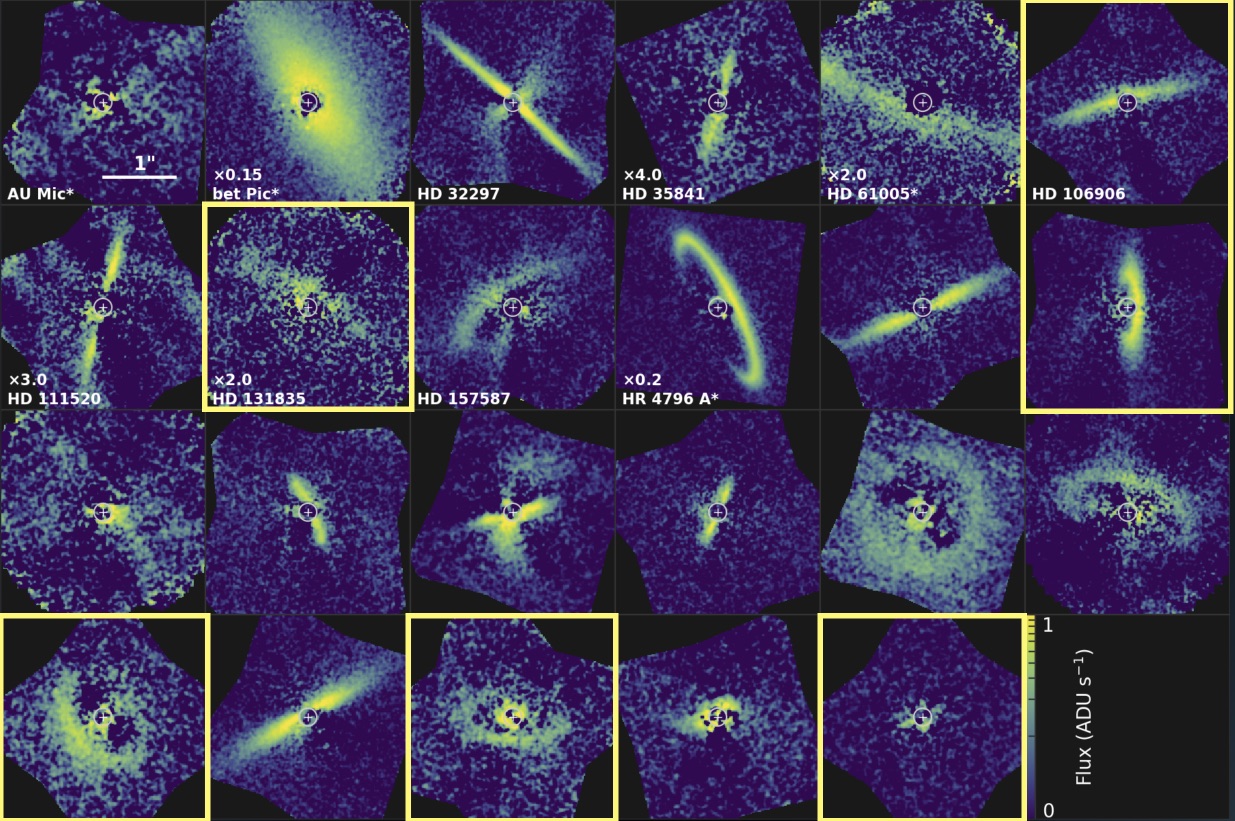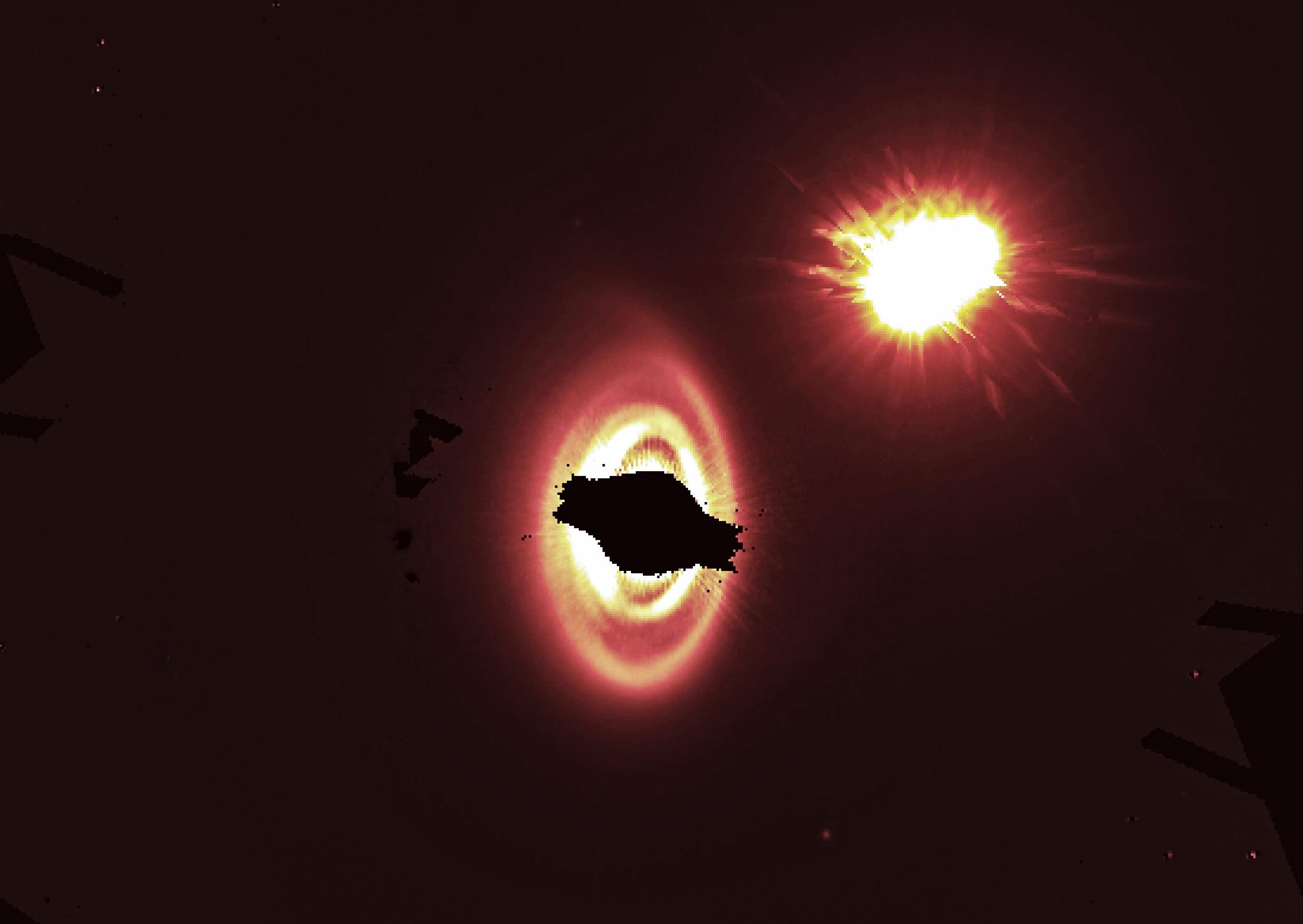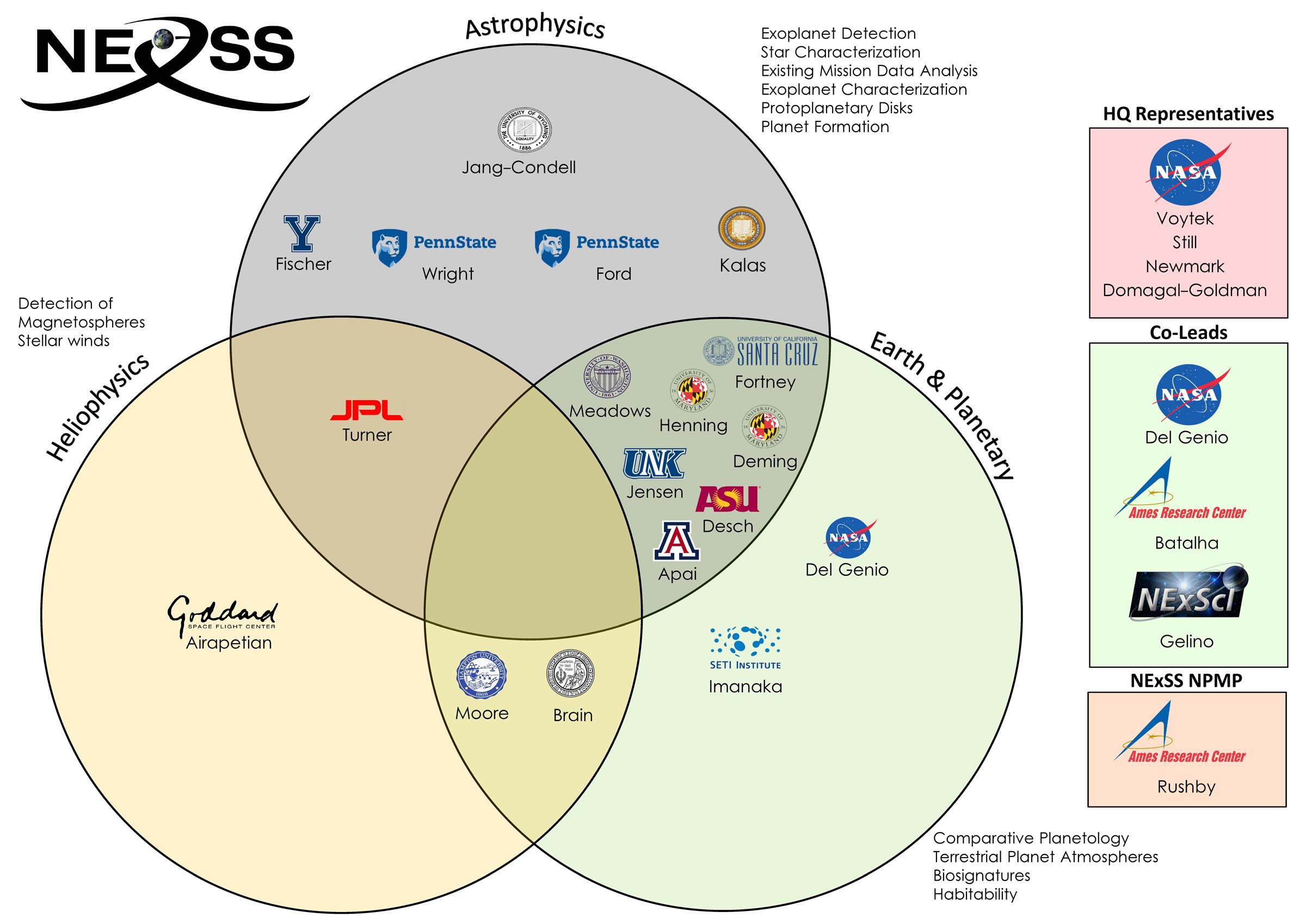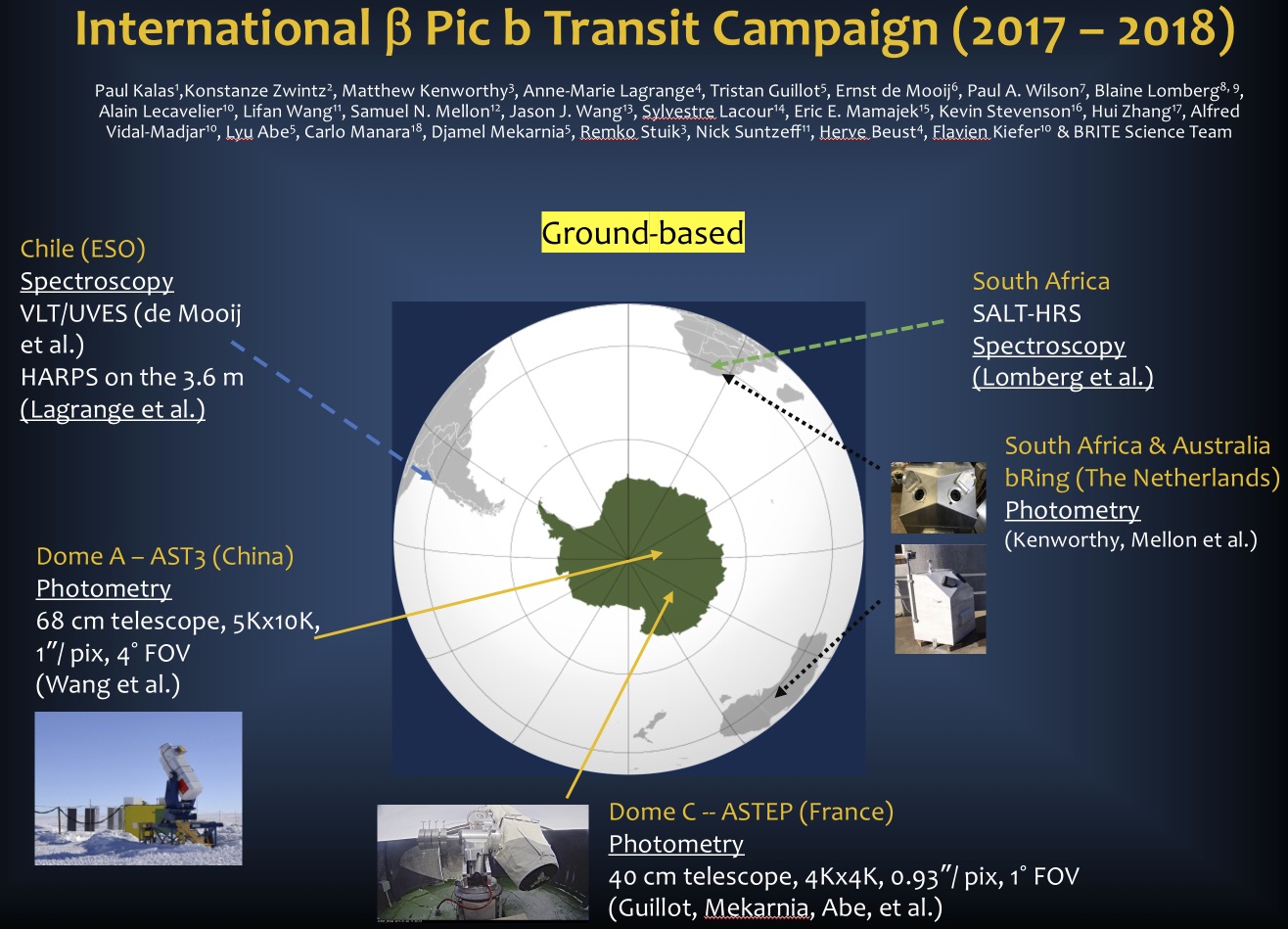Key Projects
Gemini Planet Imager Exoplanet Survey (GPIES)
The goal of GPIES is to search for and characterize extrasolar planetary systems using direct imaging, spectroscopy, and polarimetry. The two key science themes are to directly detect exoplanets and to discover new debris disks. I co-led the debris disk program with Mike Fitzgerald (UCLA), working on the project from the very beginning, serving on the instrument team, the science steering committee, and writing a comprehensive collaboration document.
The debris disk program met with outstanding success even though we were allocated only 10% of the available telescope time. After four years we had surveyed 109 stars and successfully detected 29, leading to an average of one publication per month.
GPI will be mounted on Gemini North in late 2023 and we expect to conduct a very efficient survey for disks given how much we learned about instrument performance and target properties during the Gemini South survey.
Hubble Space Telescope (HST) Programs
I am the PI of many high-contrast imaging programs using a variety of instruments aboard HST. I discovered the candidate planet Fomalhaut b via one such program, and many debris disks have been either discovered or characterized with my HST observations (Beta Pic, Fomalhaut, HD 15115, AU Mic, HD 53143, HD 139664, and HD 106906). One of the most important science goals is to measure the structure of each disk and infer the existence of planetary companions that gravitationally perturb the morphologies.
James Webb Space Telescope (JWST) Programs
I am a co-I on one of the very first JWST observations of extrasolar planetary systems called an Early Release Science program (PI Hinkley). Our primary target is the spectacular multi-ringed dust disk surrounding the young star HD 141569. Below is my image of this system using archival observations at optical wavelengths with the Hubble Space Telescope. The new JWST data at infrared wavelengths will be available in late 2022.
NASA NEXSS
Up through 2019 I co-led a NASA NExSS node at Berkeley with James Graham, and Bruce Macintosh was a co-I at Stanford. Though the focus of our NEXSS project involved the science of exoplanets derived from direct, ground-based imaging, we also pursued work with telescopes dedicated to RV measurements, photometry, and millimeter mapping. The scientists participating in our NExSS program included Isabel Angelo, Megan Ansdell, Eugene Chiang, Ian Czekala, Gaspard Duchene, Rob De Rosa, Lea Hirsch, Justin Hom, Becky Jensen-Clem, Eric Nielsen, Meiji Nguyen, Malena Rice, Dominic Ryan, and Jason Wang.
International beta Pic b Transit Campaign
Starting from 2016 I coordinated multiple ground and space-based efforts to monitor the transit of beta Pic b during 2017. The goal was to discover the first direct evidence of rings around an exoplanet. The campaign included multiple photometric and spectroscopic efforts from the ground and space with PIs from the US, France, UK, Austria, South Africa, and China. Work is currently in progress, though we have several publications analyzing the delta Scuti pulsations of the star (using the principles of astroseismology we infer the physical properties of the central star).
Space:
- Hubble Space Telescope WFC3/UVIS photometry (Wang, Kalas, Stevenson, et al.)
- Hubble Space Telescope STIS and COS UV spectroscopy (Wilson, Keifer, et al.)
- BRITE Constellation photometry (Zwintz et al.)
- PICSAT cubsat (Lacour et al.)
Ground: see the figure below.




